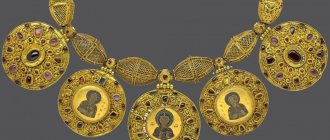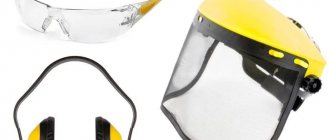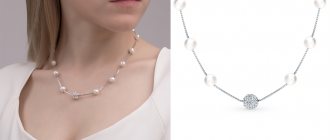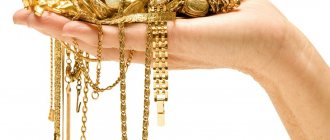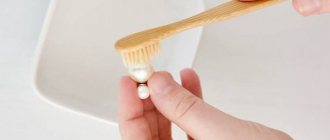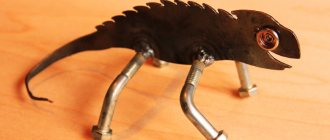Jewelry making (from the Dutch juwelier - “jewel”) is a type of decorative and applied art in which the artist creates a product from precious materials, using various techniques for processing them. In jewelry, non-ferrous metals and their alloys, semi-precious and ornamental stones are used much less frequently, but still used. A skilled jeweler must not only be able to use a special tool and thoroughly know the technical nuances of the profession, but also have extraordinary creative abilities to develop an original design for his works.
Jewelry making rightfully belongs to the category of the most prestigious creative professions, whose secrets are carefully kept by the masters and carefully passed on from generation to generation. And for unique masterpieces made by famous jewelers, wealthy people are willing to pay huge amounts of money.
What does a novice jeweler need to get started?
Jewelry art is, first of all, the filigree and complex processing of precious metals and stones. Creating jewelry requires precision and accuracy from the master, which cannot be achieved without the use of special tools. And if ancient jewelers had rather primitive tools at their disposal, which allowed them to carry out relatively rough processing, then modern craftsmen come to the aid of a wide variety of devices. So, what does a jeweler need to do work, the result of which is worthy of admiration and the right to be called a work of art?
The state of affairs in Russia in the 19th century
Jewelry art in Russia reached its highest level in the 19th century. At this time, the direction of work changes significantly, the craftsmen try to move away from European traditions and return to the original Russian ones, giving the products a national flavor. Freshwater pearls are becoming especially fashionable.
Large silver and gold enterprises appeared in St. Petersburg and Moscow. The firms of Ovchinnikov, Postnikov, the Grachev brothers and, of course, Carl Faberge are especially famous. With their amazing skill they conquer not only the Russian nobility, but also the royal courts of Western Europe. However, their products are also available to the average buyer - we are talking about cigarette cases and silverware.
According to experts, the end of the 19th and beginning of the 20th centuries is the golden age of Russian jewelry.
Jeweler's Tools
A modern jeweler is literally a jack of all trades. To perform a full-fledged job, he must possess a wide range of skills and tools. It is impossible to describe the entire arsenal of specialized tools in one article, but it is quite possible to outline the minimum set of what a novice jeweler needs to work. It includes the following categories of tools and equipment.
Carpentry tools. They are used to create and process metal blanks for future jewelry. The required set includes the following carpentry tools:
Optics. In most cases, a jeweler deals with small-sized items, so for his work he needs magnifying optical instruments, among which are:
Office tools. Before making the jewelry itself, the jeweler creates sketches and sketches of it, which are also useful for coordinating the project with the customer. For this purpose, ordinary office tools are used:
Grinding tools. This equipment is used by jewelers to give products smoothness and shine. For this purpose, the following tools are used:
Software. In addition to tools for directly creating jewelry, jewelers widely use computer modeling tools and creating sketches of future products. The following software packages are used for this:
Obviously, the above list of tools and programs used by jewelers is far from complete. In their work, they use a huge range of other equipment for cutting stones, casting, 3D printing of models, soldering, etc. Professional teachers at the J-DESIGN.PRO school of jewelry design can introduce you to all the basic aspects of jewelry making. Their online and in-person courses teach you the basic skills that any jeweler should have, from the basics of artistic composition to working with tools and programs.
Source
Briefly about the main thing
The profession of a jeweler sounds proud and elegant. Such masters make the world a little more beautiful and aesthetically pleasing. Talented specialists will invariably be in demand on the labor market, because people have always loved and continue to love jewelry.
If you decide to study jewelry professionally, check out our selection of the most popular specialized courses. This includes the best training programs from Skillbox, which are aimed at both beginners and experienced jewelry makers.
Sincerely, Victoria Alekseeva especially for the project proudalenku.ru
Jewelry Making Lessons for Beginners: Free Self-Learning Videos
People have loved jewelry since ancient times. Primitive people wore bracelets, rings and necklaces, earrings for self-expression, in order to emphasize status and wealth. Since then, almost nothing has changed. Only material processing technologies and design have become more diverse and professional.
Becoming a jewelry maker is a feasible task for anyone who loves handicrafts. You can learn how to model jewelry and master casting and inlay techniques using free video lessons for beginning jewelers. You can study from scratch and at home.
Jewelry modeling
The work of a jeweler is varied and includes many skills. In recent years, with the advent of computer 3D modeling, there has been an added need to master the appropriate computer programs and design skills. Modeling is the path from sketch to model.
Burner overview
Jewelry burners - gasoline and gas. The first type is better for home use. The gas model assumes obligations to regularly change the cylinder. When choosing and purchasing, you should pay attention to the dimensions and weight. It is better to choose miniature and lightweight samples that can produce a powerful flame.
Tools and equipment
The jeweler's arsenal is quite wide. You can really do a lot of things with your own hands.
silver ring
It is recommended to gain your first experience in jewelry making by creating rings. Possible options are cocktail, trinity, engagement and wedding rings, rings, signets. For advanced craftsmen - open, with chains or pendants, for two or three fingers. The choice of materials includes white, rose, yellow and red gold, platinum, silver, titanium, tungsten, palladium, tin, copper.
Stone setting
Inlaying objects with stones is an ancient technique with an interesting history. You can inlay any product: pendants, earrings, bracelets, necklaces, watches.
Common ways to fix a stone:
Casting
There are several technologies for making jewelry: stamping, rolling, drawing, casting. The latter is most often used when working with gold. Casting of designer products consists of the following steps.
Tubular earrings
Congo is a common name among jewelers for classic hoop earrings. Why classic? Today, the model is the most universal: suitable for any style (from hippie to r&b), age (from teenager to older lady), gender and occasion (office, city walk, business meeting, romantic date). A simple version involves molding from a hollow tubular blank. If desired, you can decorate with pebbles or additional elements, experiment with thickness, shape, diameter and textures.
Golden balls
Balls are used as parts for all types of products. Or as blanks for stud earrings. Can be cast from silver or gold. The technology is the same; the result should be hollow spherical elements. The manufactured plate will need to be cut through with a notch or a circle cut out, then formed into a hemisphere using an anchor and punches.
Earrings for earrings
Earrings are the part of the earring that is inserted into the ear. Usually they have the shape of a hook with or without a clasp (loop, English, French locks). Even if the product is made of wood, plastic, beads or wire, the hook is always made of metal. It is better to use silver, gold, medical steel, titanium, which do not cause irritation and inflammation at the puncture sites.
A crisis
To be optimistic, in the category we chose, jewelry of this design is made only by imported brands, which have now become much more expensive. Perhaps my design or that of my colleagues will simply become more accessible in relation to Western brands. And buyers who previously chose Western brands will switch to local manufacturers.
If you look pessimistically, there will be fewer spontaneous purchases. On the other hand, we began to travel less and I want to somehow please ourselves, even while staying at home. So we'll see.
How everything works: a jeweler's workshop
January 31 is International Jeweler's Day. To find out the intricacies of the precious profession, we went to a jewelry workshop.
“If a jeweler is burned after death, what will be left of him is a 5-gram gold bar,” jokes 24-year-old Alexander Tokmakov, one of the youngest jewelers in Tula.
Sasha told Myslo correspondents how people come into this profession, why it is dangerous, how a jewelry workshop is organized, what unusual things customers ask for, and how jewelry is created.
The target audience
I immediately decided for myself that I would make jewelry for everyday wear. Our slogan: “Jewelry for girls who don’t wear jewelry.” I think it clearly describes what kind of jewelry we make and who it is for.
There is no need to select clothes or dress up in any special way to match our jewelry.
I formulate my target audience based on clothing style, type of thinking, and not on income. Our jewelry is quite inexpensive; both students and ladies who drive Bentleys buy it.
How to become a jeweler
—What did you dream of becoming as a child?
- Firefighters. I thought that this was a courageous profession and that everyone respected firefighters. But then I found out that they were getting pennies, and I changed my mind. I was involved in sports - powerlifting, so after school I decided to enroll in the Faculty of Physical Education. But he didn’t become a physical education teacher either: a jeweler he knew suggested going to him as an apprentice, his father supported him and said: “Go, you’ll always earn money for food.”
I was hooked on this profession as soon as I saw the metal melting - it was very beautiful!
For a whole year, every day after classes at the university, I went to the workshop, studied, and then began to carry out simple orders. A year later, my teacher went on vacation, leaving all the work to me. I was very worried: it was scary to work without support, I was afraid of messing up. But I did it, and also earned money.
— Do you remember your first completely independent job?
- Yes, I still keep it. This is a pair of silver wedding rings. They are terrible (laughs): there are visible seams on the rings, they are uneven, and not polished properly.
— As for “earning money for food”: does a jeweler always have work?
- Yes. Firstly, in store-bought jewelry, something often tears, bends, breaks, and people go to jewelers for repairs. Secondly, in the workshop you have the opportunity to make jewelry that no one else will have. According to any sketch, any shape and size.
Pendants in the shape of boxing gloves were made as a gift for world boxing champion Alexander Besputin, who trained in Tula last summer.
Again, handmade: even two identical rings will never be the same. I once had an order from Israel: a girl asked for ordinary congo earrings (rings). There are plenty of them in stores, but she wanted handmade ones.
Weave bracelet "Pharaoh" and lock "Box". The jeweler says that this was his most difficult job in a year.
— What talents and qualities are needed to work as a jeweler?
– You need to have perseverance, hard work and communication skills. The ability to communicate is very important - you work not only with metals and stones, but primarily with people. As for talent, today you don’t have to be an artist to work in the jewelry industry: in our age, most products are made using a 3D computer model.
Requirements for the personal qualities of a specialist
As everyone has long known, each profession requires special personal qualities from a person, thanks to which the work will be as productive and comfortable as possible, especially for the specialist.
CALL A LAWYER
HE WILL SOLVE YOUR QUESTIONS FOR FREE Moscow, region 8 (499) 577-00-25 ext. 130 St. Petersburg, region 8 (812) 425-66-30 ext. 130 Federal number 8 (800) 350-84-13 ext. 130
The list of requirements for a jeweler will be as follows:
- The ability to organize your time so that the day is as productive as possible;
- Don't be afraid of monotonous work;
- Have perseverance;
- Be responsible, aware and attentive;
- Have a creative nature and an artistic eye.
The most unusual and most expensive orders
— Are there orders that surprise you?
- Yes. For example, there was a 370 g silver anchor chain that a 100 kg bodybuilder was going to use to do pull-ups. Colleagues said that nothing would work, it would break - but it didn’t break.
The accordion pendant was ordered by a client from another city. “Thanks to this order, I remembered how an accordion differs from a button accordion,” says Alexander.
Once they ordered me a medallion with a pentagram, which I had to finish making on Tuesday - only on this day there is some special energy.
Sometimes they order things that many people wouldn’t even think of, but I’m not surprised: everyone has their own cockroaches, everyone lives as they want. That’s why I do it, and if a person is happy, I’m happy too. One of the most unusual orders was a silver rod for the urethra. The customer wrote that he was satisfied.
— What is the most expensive jewelry that was ordered for you or brought in for repair?
– We ordered two large chains made of 750 gold for 550 thousand rubles. And for example, they brought in a Cartier bracelet worth 1.2 million for repair; a diamond fell out of the jewelry. It’s exciting to work with such things; it’s scary to damage or ruin them. It's better not to know how much it costs at all.
We have a classic business that grew on Instagram. There are many of those. This is a sign of the times. I think this boom will continue for some time, but the trend is already fading. Instagram is undergoing a major transformation. People are tired of the abundance of products, everyone is promoting something, and it’s already difficult to do it unobtrusively.
A few pictures from Instagram Natalia Bryantseva
What ails jewelers
— Do jewelers have occupational diseases? Is the work harmful?
– Not that it’s harmful... But it has its “sores”. Astigmatism develops from working with small details and constant eye strain. Your hands suffer, sometimes they become calloused and bloody, and it’s inconvenient to work with gloves.
When sandpaper is used, gold and silver dust hangs in the air, which you breathe, and it never leaves your lungs.
If a jeweler is burned after death, I am sure that 5 grams of pure gold will remain (laughs). You can slightly reduce this harmful nuance: install a Chizhevsky chandelier, have more flowers in the workshop, or keep the window open.
Development
At some point, there were more and more orders, and I could no longer cope on my own. In addition, it is very difficult to make serial products on your own over a long period of time. And I started looking for people who would help me with production.
Now I have two production facilities - the workshop where I studied and the jewelry factory that fulfills my orders. Now ten masters work with me constantly.
I also have an assistant who performs operational tasks: she works on the website, organizes delivery, and communicates with store buyers.
What tool does a beginning jeweler need?
The Typical Jeweler receives many messages from aspiring jewelers who want to know what tools they need to buy to get started in a jewelry shop.
We have compiled a list of basic tools that will be enough to get started. In general, there are a huge number of jewelry tools. Many jewelers purchase their tools over the years, so you can start with these basics and then order things as needed!
It is impossible to describe the entire arsenal of specialized tools in one article, but it is quite possible to outline the minimum set of what a novice jeweler needs to work. With experience, a jeweler can make many tools for himself, for individual tasks, on his own.
In turn, we tried to collect the most basic and necessary, as well as universal, based on many years of experience and looking back - “what did I buy then, many years ago, as a novice jeweler?”
List of necessary tools for a novice jeweler:
A drill is a universal equipment for a jeweler and makes it possible to mechanize the processing of jewelry. The handpiece of the drill can be used to install various attachments and process jewelry. A foot pedal is used to adjust the rotation speed of the instrument.
If the drill is not suspended, then a table-top control panel is used. The most popular drills in the world are the Foredom SR and Foredom CC-30 models.
Plates for soldering - there are a wide variety for different tasks and purposes. They are made from different materials and different shapes. Also useful will be a rotary table - letkal or letkal-spinner, on which plates for soldering from different materials are located.
There are ceramic, fireclay, non-asbestos, cellular, “buran” slabs and so on. As a rule, they are all resistant to high temperatures up to 1100-1300 C.
Crucibles - used for melting precious metal alloys in small quantities. Crucibles can be ceramic, fireclay, or gypsum. Crucibles must be fire-resistant within the melting temperatures of the materials used. Moreover, each alloy must have its own crucible.
Burners - used for soldering jewelry, repairs, and also for melting metal in a crucible. Burners can be gas, gasoline, and rarely (for very complex tasks) hydrogen.
The classic and most versatile option is a gasoline burner. There are quite old-style options with leg bellows, but not everyone will find this convenient.
It is better to choose an inexpensive, compact and reliable gasoline soldering machine of the JX 5-8, AF 3-6 or SH 3-5 series. Such devices are designed to form a gasoline-air, combustible mixture when working with gasoline burners. It consists of a gasoline tank and an air compressor placed in a single housing. Almost all Russian jewelers work with such devices.
As for the gas burner, there is also a very large choice on the market; we recommend the Orca burner as it has proven itself over the years of operation and is very reliable. When working with both gas and gasoline, strict compliance with safety regulations and safety precautions is required.
Flux is a special solution for soldering products. Fluxes used for soldering jewelry must meet the following requirements: have a lower melting point than solder; promote solder spreading; remove contamination from the soldering area and do not react with the solder; do not destroy the soldered metals.
Based on the degree of chemical activity, fluxes are divided into two groups:
There are already ready-made fluxes on sale, for different purposes of the jeweler, with different modes of use.
Laws
Jewelry activities are very strictly regulated by law.
It is necessary to register with the Assay Office in order to have the right to manufacture and trade jewelry. In addition, we are required to conduct financial monitoring. This is time-consuming. In addition, you understand that you are always accountable and can be checked at any time.
The Elba web service helps me do my accounting - with it I always submit all reports on time. And it makes my job a lot easier.
